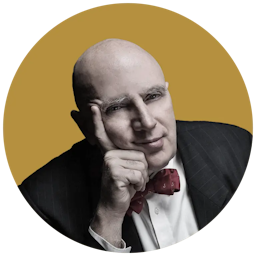An Octogenarian’s Time To Shine
This article is from the archive of The New York Sun before the launch of its new website in 2022. The Sun has neither altered nor updated such articles but will seek to correct any errors, mis-categorizations or other problems introduced during transfer.

The title of Gerald Wilson’s new album, “In My Time” (Mack Avenue 1025), has several interconnected meanings. To begin with, the octogenarian arranger-conductor is referring to the span of his career, which is indeed impressive: He first ascended to the jazz major leagues nearly 70 years ago when he joined the trumpet section of the Jimmie Lunceford orchestra.
“My Time” also means “my moment to shine.” Although Mr. Wilson has been steadily composing, orchestrating and leading bands on the West Coast since the mid-’40s – he was one of the few arrangers to write for Duke Ellington, other than the leader himself and his musical partner Billy Strayhorn – he has never shown what he can do at Jazz at Lincoln Center, the house organization for the jazz world. But last night, he conducted Wynton Marsalis and the Lincoln Center Jazz Orchestra in a program of his music that will continue Friday and Saturday nights as part of the “Los Angeles: Central Avenue Breakdown” concert series.
Finally, the reference to Mr. Wilson’s “time” could well be a nod to the way in which he employs different time signatures and tempos to keep his various compositions diverse and interesting. Of the songs on “In My Time,””AEN” is a straight-ahead 4/4 swinger, while the Spanish-styled “Lomelin” employs flamenco and pasodoble rhythms, and “Blues for Manhattan” pivots around a funky, odd-meter backbeat.
The compositions on Mr. Wilson’s new album all originate with various challenges posed by music theory. The centerpiece of the album is a three-part suite titled “The Diminished Triangle,” which Mr. Wilson built out of three diminished chords by requiring his musicians to work within the 12 notes found in those chords and in the eight-part harmony they produced. Likewise, “Blues for Manhattan” isn’t so much about painting an image of Gotham as it is about the concept of writing a piece for a saxophone section in five-part harmony – as opposed to most sax section writing, which is in three-part harmony.
Yet if Mr. Wilson provides a theoretical imperative for his compositions, he also personalizes them by naming them after his family: “AEN” connotes the first names of his son, the fine jazz guitarist Anthony Wilson, and his two grandsons; “Jeri”is named for his oldest daughter. It’s almost as if he relates to such concepts as diminished chords and various parts of harmony in the same loving way as he does to his children – the music certainly sounds as if he does.
What makes “In My Time” especially significant is that Mr. Wilson recorded the album a few months ago in New York with an all-star band of Gothamcentric players. Pianist Renee Rosnes, bassist Peter Washington, and drummer Lewis Nash open the first track, “Sax Chase,” with a suggestion of Mc-Coy Tyner and the classic Coltrane quartet; on “Love for Sale,”their lighter and looser introduction recalls Mr. Wilson’s one-time boss, Count Basie. Star trumpeter Jon Faddis plays with a Latin tinge reminiscent of Ellington’s highnote specialist, Cat Anderson; another trumpeter, Jimmy Owens, offers a nod to Miles Davis in Mr.Wilson’s hard-driving re-interpretation of “So What.”
Sixty-five years ago, in 1941, Jimmie Lunceford introduced Mr.Wilson’s first classic composition, “Yard Dog Mazurka”; six years later, Stan Kenton reworked that tune into his own “Unison Riff.” Mr.Wilson, too, likes to revise his works continually: “Sax Chase” and “Love for Sale” are based on charts he’s been tinkering with for years, the latter going back to 1953, when he utilized the brilliant lead alto playing of Jerry Dodgion (who also plays on “In My Time”). “Ray’s Vision,” the second piece in the “Diminished” suite, opens with a paraphrase of Ellington’s “In a Sentimental Mood” as if played in unison by vibes and piano.
Mr. Wilson will turn 87 this September, but he has only performed in New York on two previous occasions I can recall in the two decades that I’ve been observing the scene. Bringing him to Rose Hall for a special concert honoring Los Angeles jazz is one of the smarter things Jazz at Lincoln Center has done, and evidence that the 50-year-old rivalry between East Coast and West Coast jazz, which Mr. Wilson remembers well, has at last ended in detente.
***
Speaking of detente, Rose Theater on Wednesday night played host to visitors from even farther away than L.A. This was “Crossover Concerto,” a concert starring two ensembles from Moscow.
They were led by two dynamic players: the violist Yuri Bashmet, leading the Moscow Soloists Chamber Orchestra, and the saxophonist Igor Butman with his own Big Band of Russia. The idea was to blend classical music and jazz by showing how the two groups could work together and by having the big band play adaptations of Russian and other classical works.
Leonard Bernstein, Dick Hyman, and others have put together similar programs, but never with such a pronounced Russian accent. Mr. Butman gave us an exceedingly mellow treatment of Rachmaninoff’s “Vocalese” on soprano sax and strings, and Mr. Bashmet played a Shostakovich “Scherzo” that was really slamming – as if it had been written by Charles Mingus. The second half, however, was the highlight, featuring a new “Jazz Suite”for the two orchestras and the two star soloists, along with the composer and pianist, Igor Raykhelson. At times reminiscent of Stan Getz and Eddie Sauter’s “Focus,” this is an organic work that succeeds in drawing out the best from this unusual combination.
Mr. Wilson will conduct the Lincoln Center Jazz Orchestra under the auspices of the “Los Angeles: Central Avenue Breakdown” series February 24 & 25 at Rose Theater (Broadway at 60th Street, 212-721-6500).

